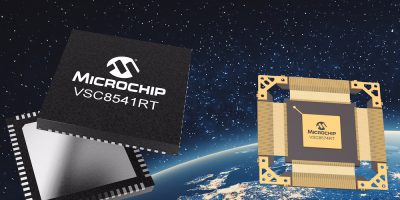NXP Semiconductor has integrated Amazon Web Services (AWS) into its S32K3 automotive microcontroller series for body, zone control, and electrification applications.
The S32K3, S32Z/E, S32G2 and S32G3 enable new in-vehicle and secure cloud services. Using FreeRTOS libraries supporting AWS IoT Core, NXP’s S32K3 with integrated cloud connectivity speeds up the development time for software-defined vehicles (SDVs) to securely connect to the cloud and deliver vehicle data-driven insights and services and over-the-air (OTA) updates, claimed NXP. The software libraries also enable seamless connectivity between the S32K3 and devices running AWS IoT Greengrass.
AWS IoT services have been integrated with NXP’s S32G vehicle network processor for service-oriented gateways since 2020. The NXP S32 devices’ software with AWS cloud solution supports a range of communication technologies and can be used with wireless connectivity technologies like 4G/5G cellular and Wi-Fi. Now NXP S32K3 devices can connect directly to AWS cloud services or a more powerful S32G device using AWS cloud services such as AWS IoT Core, AWS IoT Greengrass or AWS IoT FleetWise.
Extending AWS connectivity to S32K3 gives automotive OEMs the flexibility to build AWS cloud connectivity into their vehicles regardless of the vehicle architecture used and supports the vehicle architecture transition. This includes architectures in which the S32K3 acts primarily as an end node or zonal controller and supplements an S32G vehicle network processor, as well as configurations with multiple S32K devices without an S32G processor, with at least one S32K3 acting as a gateway to access AWS cloud services.
The combination of NXP’s S32 vehicle compute platform and AWS cloud connectivity is appropriate for different mobility types. For example, the direct connection of the S32K3 devices to the cloud is suitable for smaller vehicles such as electric bicycles and scooters, where the S32K3 acts as the aggregator or main controller.
The NXP S32K3 devices are scalable, low power Arm Cortex-M series-based microcontrollers that are AEC-Q100 qualified with advanced safety and security and software support for automotive and industrial ASIL B/D applications in body, zone control and electrification. There is a dedicated hardware security engine (HSE) and A/B swap capability and OTA firmware updates to the S32K3 are secure and protected, said NXP. The devices are supported by a minimum of 15 years of product longevity and a comprehensive, third-party software and tools ecosystem.
Access to and processing of real time, vehicle wide data with secure access to cloud services and machine learning can enable intelligent vehicles that continually improve with OTA updates. This can provide insights into vehicle performance and health, driver behaviour and traffic patterns for automotive manufacturers while consumers can extend the longevity of their vehicles and add features. NXP suggested one example could be that data collected and analysed can lead to new revenue streams with services such as usage-based insurance.







